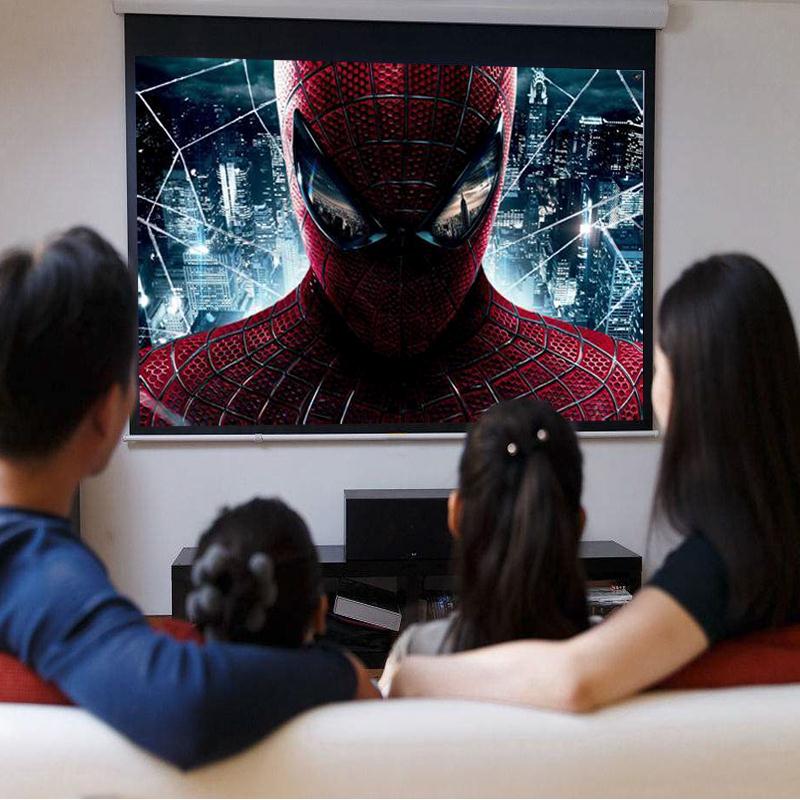A motorized projection screen is a white or gray screen that is attached to a motor on along one edge. The motor is housed inside a case at the top of the screen, along with a cylindrical roll. This type of screen is very popular in classrooms, lecture halls and exhibition spaces. The motor allows the screen to be discreetly moved out of the way.
The motor can be controlled using a wireless remote control as well as an embedded remote control which is attached with the screen to control the screen’s rolling motion. It is a great fit for those who have a TV unit on the same wall on which the screen is installed. The fact that its height can be easily adjusted with the help of the remote control “makes it perfect multi-purpose option as it can be used to display differently sized content.
There are several different models of motorize projection screens available. In order to determine which model best suits your space and your needs, it is important to make a list of your requirements. A clear list of requirements significantly increases the accuracy of the quotation from suppliers.
The most common requirements are screen size, overhead hanging size, screen location and ease of operation. These items are all important factors when selecting a motorized projection screen. Invest the time required to determine exactly what type of screen will meet your needs.
Screen size is closely related to the type of projection that you have purchased. The projector model that you have will list the throw distance and the ideal screen size in the product specifications. Throw distance is how far the projector can be away from the screen. The ideal screen size details provide three measurements: vertical, horizontal and diagonal. Use these dimensions when deciding the size of the screen to purchase.
A motorized projection screen has a motor and storage roll located at the top of the screen. The motor moves the roll forward to unfurl the projection screen and rolls backward to collect the screen. Determine exactly how much head space there is and make sure that there is enough room for the motor. Review the different installation methods and decide which one will work best in the space.
The motor can be controlled using a wireless remote control as well as an embedded remote control which is attached with the screen to control the screen’s rolling motion. It is a great fit for those who have a TV unit on the same wall on which the screen is installed. The fact that its height can be easily adjusted with the help of the remote control makes it perfect multi-purpose option as it can be used to display differently sized content.
The location of the screen is determined in part by the location of the projector for mounted projector and the ideal viewing location. It is most common for the screen to be located at the front of the room. Check the location of the windows to ensure that they are not behind the screen location, as this is visually distracting. Look at the door locations and ensure they are behind the audience.
Operational details make or break an installation. Determine where to locate the motorized projection screen controls to raise and lower the screen. Identify the power source and outlet for the screen itself. Isolate the location of the speakers for ideal listening enjoyment and make sure that all wiring is done by a licensed electrician.



